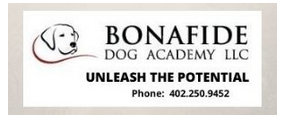- Do you subscribe to Dharma Dog Training’s Newsletter? You should.
- A Unique Campaign from The Humane Society of the United States
- Rabid bats in Omaha- Stay safe, prepared with these tips
- Springtime Activities in Omaha
- Mill Dog Monthly from Bailing Out Benji
- World Spay Day, Legislative Alert in Nebraska
- Attend the Nebraska Rescue Council’s monthly meeting this Saturday
- Five Hard-to-Ignore Reasons to Adopt!
- Paws in Pink to Benefit Breast Cancer Foundation
- VCA, Inc. Acquires MidWest Vet Specialists from Kansas State University
Keeping your pets safe this spring

We are more than one week deep into spring, the season of renewal and To-do lists. But remember your pets as you embark on spring-cleaning your home and prepping your garden beds.
The spring season is ideal for scheduling a check-up for your pet at your local vet, and it’s also the season that ushers in potential perils for your pet. Keep reading for reminders on keeping your pets safe.
Spring Health Check-up
Use the beginning of daylight saving time (DST) as a reminder to schedule a spring health examination for your pet. After a long winter inside and exposure to cold outside, pamper your pet with a check-up. In one appointment, your pet can receive any of the following treatments:
– Nail trim
– Anal gland expression
– Dental care
– Ear cleaning
– Weight maintenance
– Preventive medicine (i.e., heartworm, flea & tick)
Hazards of Spring
Some hazards for our favorite furballs come with the refresh and radiance of spring. So keep reading to be prepared for the dangers of the season:
Allergies & Insects
Just like us, pets can suffer from seasonal allergies. Your fluffy buddy can be irritated by pollen from trees, weeds, grasses, and flowers just as much as you are. So keep an eye out for signs of allergies in your pet, such as sneezing, runny eyes, increased scratching and licking, or face-rubbing. If you suspect your pet is suffering from allergies, make an appointment with your veterinarian, who can diagnose the allergy and provide much-needed relief.
If you live in a seasonal climate where spring means warmer temperatures, it also means an increase in insects. Fleas, ticks, and mosquitoes are just as much a hazard to your pet as they are to you, so protect them like the family member they are.
- Fleas are nearly unavoidable but manageable. If a flea infestation goes unmanaged, fleas could overrun your home in a few weeks, and your pup could scratch itself to an unwelcome infection. Talk to your vet and decide the best flea-prevention plan for your pet and home.
- Ticks are dangerous because of the health risks they present. Beyond anemia, blood loss, and skin infection, ticks can also transmit various regional diseases. Talk to your vet about the best tick prevention for your pet, and don’t forget to do your manual tick-checks whenever your pet comes in from a long romp in the lawn.
- Mosquitoes are as much a disease- and itch-causing annoyance to animals as they are to humans, so conduct a yard audit and remove any areas of standing water on your property before temperatures soar.
Outdoor Gardens
Who knew that gardens can also pose a risk to the health of your pets? They aren’t just beds of beauty and food; they can conceal dangers too.
- Your home is likely free of poisonous plants to your pets, but have you considered plant toxicity when planning your outdoor garden? The list of potentially harmful plants to cats, dogs, and horses seems nearly endless, but make sure to cross-reference your plant purchases to this “Toxic and Non-Toxic Plants List” from the ASPCA: https://www.aspca.org/pet-care/animal-poison-control/toxic-and-non-toxic-plants A few popular spring bloomers that are toxic to pets are daffodils, azaleas, and tulips (especially the bulb).
- Since dogs are notorious diggers, ensure they’re digging in the safest dirt possible using pet-friendly fertilizers. If you use pesticides or herbicides, always follow the directions and store them in an unreachable place for your curious companions.
Spring Cleaning
Spring and cleaning go hand in hand, but don’t let this seasonal tradition bring an ailment to your pet. Household cleaning products like bleach, ammonia, and drain cleaners can be hazardous to humans and animals, but most humans know not to consume these chemicals. Protect your pet by only choosing non-toxic, pet-friendly cleaners, or store conventional cleaners in safe places. If your fluffy buddy is terrified of the vacuum, consider using a broom on hardwood floors or only vacuuming while your pet is outside or safely stowed in another room.
Easter
Easter is fast approaching, and while kids are anticipating candies and hunts, you need to expect how to keep your pet safe on this celebratory holiday. Unfortunately, a few icons of Easter can bring distress and harm to your pets:
– Easter lilies are toxic to cats.
– Chocolate is toxic to dogs and occasionally cats.
– Xylitol, the ingredient in sugar-free candies, can be toxic to dogs and cats.
– Colorful plastic grass, commonly stuffed in Easter baskets, can be attractive to nibbling kitties but can easily obstruct their digestive tracts.
Welcome this season of renewal by scheduling a health check-up for your pet, planning how to prevent and manage allergies and insects, creating a pet-friendly yard and garden, cleaning your house with non-toxic cleaners, and celebrating a safe Easter for all.
Lastly, spring brings more time at dog parks and more play dates outside, so make sure your pets are microchipped correctly in case they wander too far away from home. May spring always remind you to refresh your life and protect your pet at the same time.
Latest News
-
Join Us at Pick A Pooch 2025: A Fun-Filled Weekend for the Whole Family
A Fun-Filled Weekend for Pet Lovers and Families Alike Mark...
- Posted 1 year ago
- 0
-
Beardmore Presenting Sponsor At This Years Pick-A-Pooch event
🐾 We are thrilled to announce that Beardmore Subaru is...
- Posted 4 weeks ago
- 0
-
How Having A Pet Can Change Your Life
Having a pet can open your heart in ways that...
- Posted 2 months ago
- 0
-
How To Improve The Life Of Your Senior Pet
Do you have an elderly fur baby and want to...
- Posted 3 months ago
- 0
-
Springtime Activities To Enjoy With Your Furry Friends
Are you preparing for warmer weather and want some ideas...
- Posted 4 months ago
- 0
-
Pros And Cons Of Microchipping Your Pets
Have you considered whether your pets should be microchipped and...
- Posted 5 months ago
- 0
-
The Best New Fun Toys For Dogs And Cats
The Best New Fun Toys For Dogs And Cats Did...
- Posted 5 months ago
- 0
-
Heartfelt Ways To Show Your Pet You Love Them
Did you know there are more ways to show your...
- Posted 6 months ago
- 0



















You must be logged in to post a comment Login